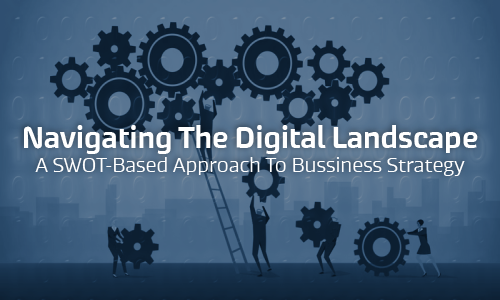
Summary: In the ever-evolving digital era, businesses must navigate the digital landscape with adaptive and data-driven strategies. This study examines a business strategy approach using SWOT analysis (Strengths, Weaknesses, Opportunities, and Threats) to understand and optimize digital opportunities effectively. By highlighting internal strengths and weaknesses as well as external opportunities and threats, this approach helps businesses design more responsive strategies to technological changes and market trends. The findings indicate that SWOT analysis can serve as an effective tool for shaping strategic decisions, enhancing competitiveness, and ensuring business sustainability in the digital era.
SWOT analysis is a strategic planning analysis method used to monitor and evaluate a company's environment, both external and internal, for a specific business objective. SWOT stands for Strengths, Weaknesses, Opportunities, and Threats. This analysis serves as a model for analyzing both profit-oriented and non-profit organizations, with the primary goal of gaining a more comprehensive understanding of the organization's condition.
In the past, SWOT was often used as a concept for winning battles, as stated by Sun Tzu: "If we know the strengths and weaknesses of our opponent, we can be certain that we will win the battle." The application of SWOT in a company aims to provide guidance to help the company stay more focused. By implementing SWOT analysis, it can serve as a benchmark from various perspectives, including strengths, weaknesses, opportunities, and potential threats that may arise in the future.
In the perspective of SWOT, external and internal factors are analyzed as follows:
External Factors
External factors influence the formation of opportunities and threats (O and T). These factors are related to conditions outside the company that affect decision-making. This includes the industry environment, macro-business environment, economic conditions, political factors, legal aspects, technology, demographics, and socio-cultural influences.
- Opportunities: External conditions or trends that could benefit the company or organization. These could include market growth, technological advancements, changes in consumer behavior, and favorable regulations.
- Threats: External challenges or obstacles that could harm the organization. These may include competition, economic…












